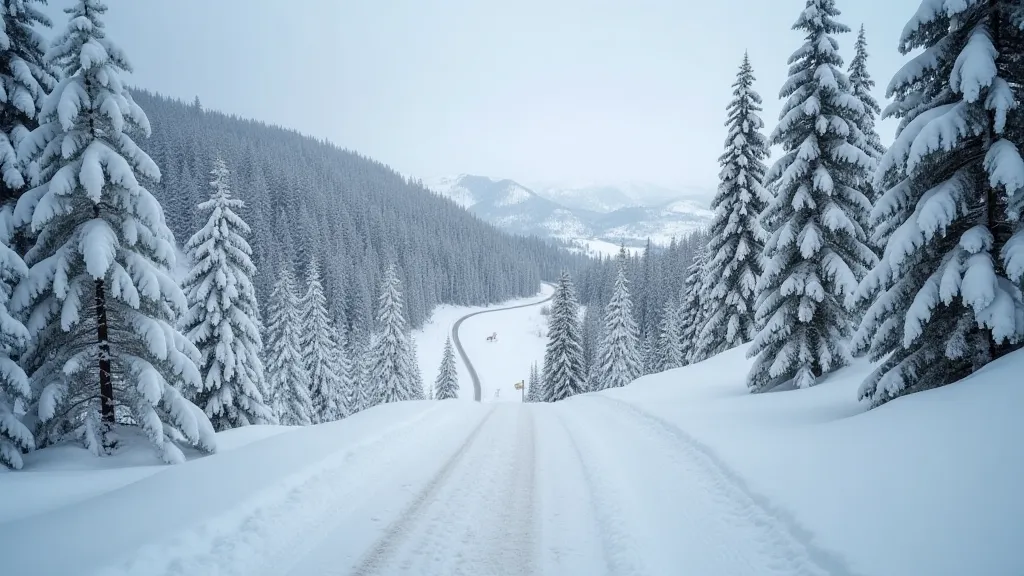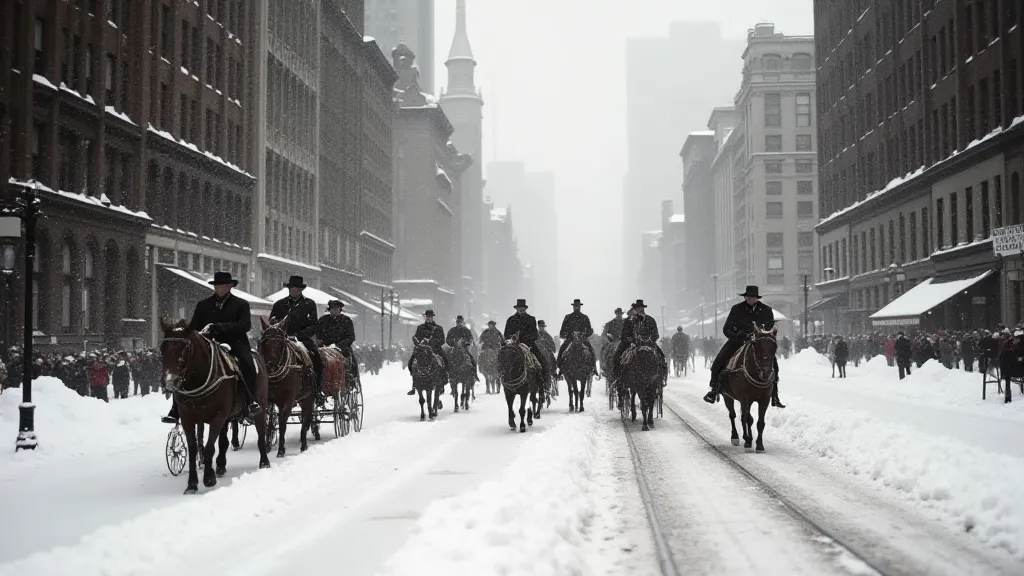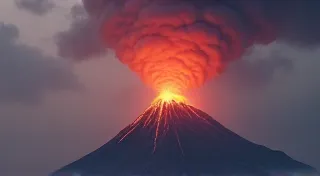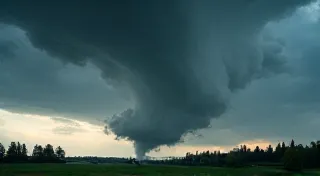Past Winters: Comparing Snowfall Records Across Regions
Winter holds a unique fascination, marked by dramatic snowfall, biting winds, and the beauty of a snow-covered landscape. But how have winter storms and snowfall patterns changed over time? Analyzing historical weather data allows us to explore past winters, identify trends, and understand how the climate is influencing snowfall across different regions. This article delves into historical snowfall records, comparing events and conditions to shed light on weather history and how it relates to present-day conditions.
Understanding Historical Snowfall Data
Gathering reliable historical snowfall data presents challenges. Early records were often localized, based on anecdotal observations, or dependent on limited measurement tools. As technology advanced, data collection became more consistent and widespread. Early records may be based on visual estimates of snow depth rather than precisely measured precipitation totals. Despite these limitations, these records provide a valuable snapshot of past weather history. It’s important to note that understanding these events often requires looking at a broader range of weather phenomena, such as the impact of extreme events like hailstorms, which have also left their mark on historical records – more on that can be found on our article about historical hailstorms.
We’re focusing on several key regions for this analysis: the Northeastern United States, the Pacific Northwest, and parts of the Midwest. Each region has a distinct climate and typical snowfall patterns, allowing us to draw meaningful comparisons.
The Northeastern United States: A Century of Snow
The Northeastern United States is renowned for its significant snowfall. Examining records from cities like Boston, New York, and Philadelphia reveals periods of unusually heavy or light snowfall. For example, the Great Blizzard of 1888 remains a benchmark event, dumping unprecedented amounts of snow and causing widespread disruption. The sheer scale of that storm, and its profound impact on infrastructure and daily life, underscores the importance of understanding extreme weather events. Comparing the snowfall totals from the early 1900s to recent decades highlights noticeable variations. Some areas have experienced an increase in the frequency of intense winter storms, while others have seen a shift toward rain instead of snow during typical snowfall periods. Analyzing long-term climate data reveals possible correlation with overall warming trends. Understanding the long-term patterns isn’t solely about snowfall; it also encompasses other meteorological occurrences. For example, the evolution of fog and low cloud formations has followed a distinct, albeit complex, trajectory – explored further in our discussion about changing patterns of fog and low clouds. The impact of these shifts extends beyond mere inconvenience; they significantly affect regional economies, particularly those reliant on winter tourism and transportation.

Recent investigations suggest a complex interplay of factors contributing to these observed changes. While natural climate variability always plays a role, the undeniable increase in atmospheric greenhouse gases undeniably influences regional climate patterns. Furthermore, urban heat island effects – where cities retain more heat than surrounding rural areas – can influence snowfall patterns, often leading to reduced snowfall in and around urban centers. It’s a nuanced picture, demanding careful consideration of multiple contributing factors.
The Pacific Northwest: Cascading Snowfall and Changing Patterns
The Pacific Northwest, particularly areas east of the Cascade Mountains, receive substantial snowfall due to orographic lift – the forcing of moist air upwards as it encounters mountain ranges. Historical snowfall records from cities like Seattle, Spokane, and Portland illustrate the variability of winter conditions. While some years brought record-breaking snowpacks, others were marked by significantly below-average precipitation. The transition from snow to rain at higher elevations has been a noticeable trend in recent decades, impacting snowpack levels and water resources. This transition isn't just a meteorological curiosity; it directly affects water availability for agriculture, hydroelectric power generation, and municipal water supplies. Changes in snowpack and precipitation patterns are influenced by broader climate trends and are intrinsically linked to how hurricanes and other large weather systems behave over time. The impact of shifting hurricane tracks and intensities is a subject of intense study, and understanding these changes is vital for predicting future snowfall patterns. The 1953 Atlantic hurricane season, for instance, provides a fascinating case study of an exceptionally active year which can impact weather patterns far inland – details of that historic season can be found on our page about the 1953 Atlantic Hurricane Season. The connection between far-off hurricanes and inland snowfall highlights the interconnectedness of the global climate system.

Analysis of historical data reveals a trend towards earlier spring snowmelt, which can have cascading effects on ecosystems and water resources. The reduced snowpack also contributes to increased risk of wildfires later in the summer, as drier conditions prevail. This complex interplay of factors underscores the need for comprehensive climate adaptation strategies.
Midwest Winters: Fluctuations and Variability
The Midwest experiences a wide range of winter weather, from blizzards to occasional thaws. Analyzing snowfall records from cities like Chicago, Minneapolis, and Des Moines demonstrates a pattern of fluctuating conditions. Periods of consistently heavy snowfall have been interspersed with years of relatively mild winters. Changes in the timing of the snow season – with earlier or later first and last snowfalls – are also evident in the data. Shifts in these patterns can significantly impact agricultural practices and transportation infrastructure. The relationship between snowfall and overall temperatures is complex, and it’s often influenced by larger weather systems and the ocean's impact on climate. Understanding the historical context of these patterns can help us anticipate future trends and adapt to changing conditions. These changes are particularly important to consider in the context of agricultural planning and the management of critical infrastructure.

The observed fluctuations in snowfall across the Midwest are not random; they reflect larger-scale climate patterns, such as shifts in the position of the jet stream. Understanding these patterns is essential for predicting future winter weather conditions and developing strategies to mitigate the impacts of extreme weather events. Furthermore, the influence of El Niño and La Niña, cyclical warming and cooling patterns in the Pacific Ocean, significantly impacts winter weather patterns across the Midwest.
The Science Behind Historical Weather Analysis
Analyzing historical weather data involves a blend of scientific disciplines. Climatology, meteorology, and data science all play crucial roles. Early records are often incomplete or inconsistent, requiring careful interpretation and correction. Scientists use statistical methods to identify trends and patterns, accounting for factors such as changes in measurement techniques and reporting practices. Modern climate models also incorporate historical data to simulate past climate conditions and predict future trends. The accuracy of these models depends on the quality and completeness of the historical record. Furthermore, examining how weather patterns interacted with societal and geographical features is vital to gain a full understanding of the effects of historical weather. Data visualization techniques also play an increasingly important role in communicating these complex trends to a wider audience, helping to raise awareness about the impacts of climate change.
Comparing Historical Weather vs. Present Conditions: What Do the Records Tell Us?
Comparing past snowfall records with present-day conditions reveals complex trends. While it’s difficult to attribute specific events solely to climate change, the overall pattern suggests a shifting climate impacting snowfall distribution. Some regions are experiencing more extreme winter events, while others are seeing a decrease in overall snowfall. These shifts underscore the importance of continuous data collection and analysis to understand the impacts of a changing climate on winter weather patterns. Historical weather analysis provides a crucial baseline for understanding and anticipating future conditions. It’s not just about the volume of snowfall; it’s about the intensity, duration, and timing of winter storms. The frequency of extreme weather events, such as blizzards and ice storms, is also a key indicator of climate change. The interplay of atmospheric conditions, geographic features, and human activity creates a complex web of factors that influence snowfall patterns. Understanding these factors and their interactions is vital for developing effective adaptation strategies and mitigating the impacts of climate change.
Understanding how these patterns have evolved over time requires a long-term perspective. Looking back at historical records reveals not only changes in snowfall patterns but also shifts in the broader climate system. For instance, changes in ocean temperatures and atmospheric circulation patterns can influence snowfall distribution. Furthermore, human activities, such as deforestation and urbanization, can alter local climate conditions and affect snowfall patterns. A complete assessment of these factors requires a multidisciplinary approach, integrating data from various sources and applying advanced analytical techniques. The challenge lies in disentangling the natural variability from the human-induced changes to accurately assess the long-term trends. The use of advanced statistical modeling and machine learning techniques is becoming increasingly important in addressing this challenge.
Further research into regional climate data and advanced modeling techniques will continue to refine our understanding of historical snowfall patterns and their relationship to broader climate trends. The ongoing collection and analysis of weather data are essential for monitoring climate change and adapting to its impacts. Moreover, engaging the public in discussions about climate change and its effects on weather patterns is crucial for fostering a sense of shared responsibility and promoting sustainable practices. This requires not only providing scientific data but also communicating the implications of these changes in a clear and accessible manner.





